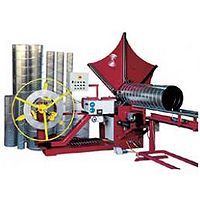Sand Sieves
Sand Sieve is a tool for sifting sand or other particles in order to sort the particles according to size. It is usually a simple screen of metal or plastic, with openings of a set size, designed to allow particles of a certain size or smaller to pass through, while catching any larger particles. These sieves can be small, hand-held tools used by gardeners or scientists or large, industrial devices used in the production of quarry products like sand and gravel.
An analytical technique called sand sieve analysis is often used to determine the relative composition of sand or composite sediment according to particle size. Sand sieves of gradually decreasing size from top to bottom are arranged in a column, sometimes held by a frame or other apparatus. The sediment sample is weighed and poured into the top sieve, and this sieve is shaken for a set amount of time. As the sediment passes through the sieves, they are each shaken for the same amount of time. The individual sizes of sediment particles are then weighed, allowing for classification of the sample.
Gardeners and hobbyists sometimes use a sand sieve to separate sand and other soil particles. Bonsai enthusiasts often employ them for this purpose, to allow them to more precisely formulate the specialized soil mixtures used for growing dwarf trees. Archaeologists and paleontologists sometimes employ sand sieves to sift sand or other sediment for very small artifacts or bits of bone and teeth.
In industry, sand sieves are often used for producing sand of a particular uniformity of particle size for things like children's play areas, pool filters, sandblasting applications, concrete and mortar mixes. Industrial sand sieves may be very large, capable of handling many thousands of tons of sand per day, and are often fed by conveyor belts. By changing the number of sieves or mesh sizes of a series of sand sieves, nearly any combination of particle sizes can be produced.
Sand sieves are sold in standard sizes and are designated by a number that usually refers to the number of holes per inch. Taking into account the standard diameter of wire used to make a sand sieve, the maximum particle size can be calculated from the mesh number of the sieve. To calculate this figure in inches, divide 0.6 by the sieve number. To calculate this figure in millimeters, divide 15 by the sieve number.
Video
